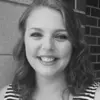Imaging agent catches acute venous thromboembolism missed by other methods
When diagnosing acute venous thromboembolism (VTE)—a disease that includes deep-vein thrombosis (DVT) of the leg or pelvis and its complication, pulmonary embolism—PET/CT imaging with a 18F-GP1 radiotracer performed with a higher detection rate than conventional imaging, according to research published in The Journal of Nuclear Medicine.
“Conventional imaging with ultrasonography, CT venography or CT pulmonary angiography is typically unable to distinguish old thromboemboli from new and potentially unstable thromboemboli,” corresponding author Dae Hyuk Moon, MD, a professor at Asan Medical Center at the University of Ulsan College of Medicine in the Republic of Korea, said in a prepared statement. “The 18F-GP1 tracer used in this study offers the unique ability to detect, characterize and track newly formed thrombi that have a high risk for embolization and further complication.”
For the study, the researchers assessed the safety and diagnostic performance of 18F-GP1 PET/CT in 10 patients with acute DVT of the leg and 10 patients with pulmonary embolism. Each patient also exhibited signs of VTE and had one or more VTE foci confirmed by standard imaging exams.
The researchers found that 18F-GP1 uptake in thromboemboli could be easily indicated from the blood pool. They also observed a positive correlation between 18F-GP1 uptake and P-selectin expression on circulating blood platelets—which showed the presence of activated platelets and acute VTE and could help differentiate acute VTE from chronic VTE.
Overall, 18F-GP1 PET/CT detected thromboembolic foci in all 20 patients, specifically detecting 89 percent of vessels with DVT and 60 percent with PE. Most notably, 18F-GP1 PET/CT showed increased uptake in 32 vessels that were not previously detected by conventional imaging, of which 25 were located in distal veins of the leg in 12 patients.

